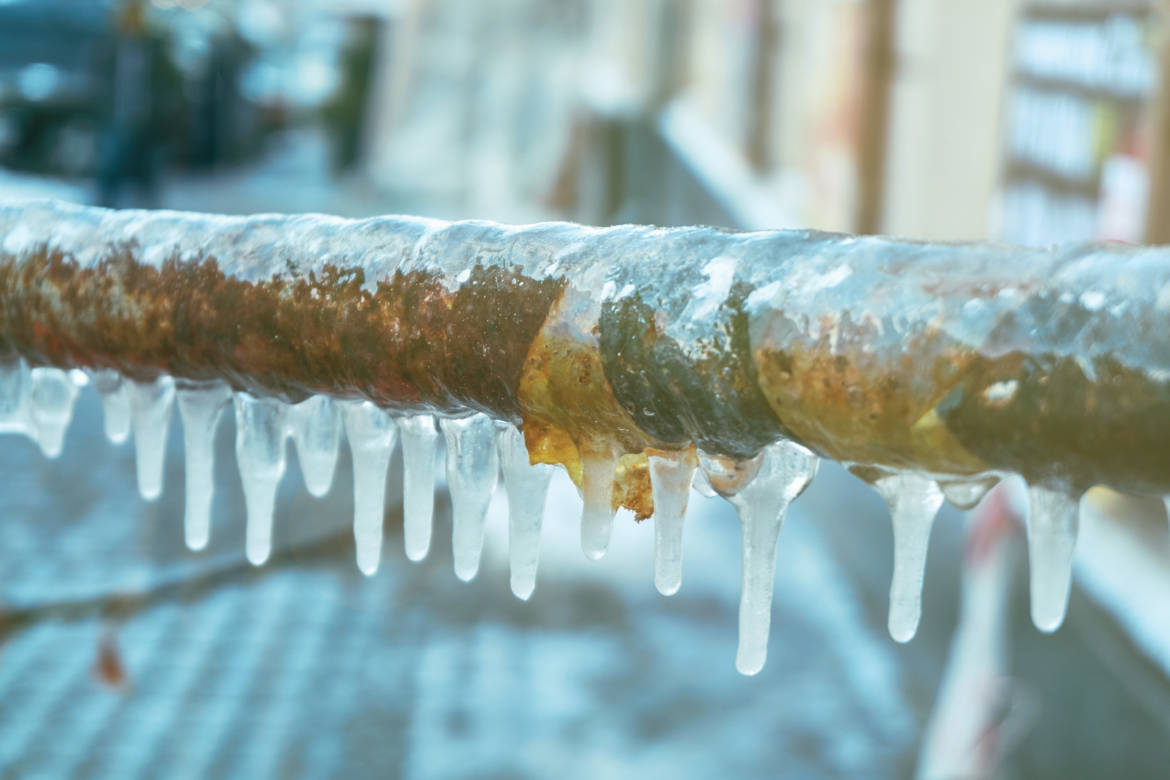Ways to Defend Your Pipes from Cold Weather: Specialist Guidance
Ways to Defend Your Pipes from Cold Weather: Specialist Guidance
Blog Article
Right here further down you can find some superb material related to Helpful Tips to Prevent Frozen Pipes this Winter.

Cold weather can ruin your plumbing, especially by freezing pipes. Here's how to avoid it from happening and what to do if it does.
Introduction
As temperatures decline, the danger of icy pipelines increases, potentially resulting in costly repair services and water damages. Recognizing how to stop frozen pipelines is crucial for house owners in cold environments.
Prevention Tips
Protecting at risk pipelines
Cover pipes in insulation sleeves or utilize warmth tape to safeguard them from freezing temperatures. Concentrate on pipes in unheated or exterior locations of the home.
Heating methods
Keep indoor areas sufficiently warmed, particularly areas with plumbing. Open cabinet doors to allow warm air to flow around pipelines under sinks.
Exactly how to determine icy pipelines
Search for reduced water circulation from taps, uncommon smells or sounds from pipelines, and noticeable frost on exposed pipes.
Long-Term Solutions
Structural modifications
Think about rerouting pipelines away from exterior wall surfaces or unheated areas. Include extra insulation to attics, cellars, and crawl spaces.
Upgrading insulation
Invest in high-grade insulation for pipes, attic rooms, and walls. Correct insulation assists preserve consistent temperature levels and decreases the danger of frozen pipes.
Safeguarding Exterior Pipes
Garden tubes and outside taps
Detach and drain garden hose pipes before winter. Mount frost-proof spigots or cover outdoor faucets with shielded caps.
Comprehending Frozen Pipes
What triggers pipes to ice up?
Pipes freeze when exposed to temperature levels listed below 32 ° F (0 ° C) for prolonged periods. As water inside the pipes ices up, it increases, putting pressure on the pipeline wall surfaces and possibly triggering them to burst.
Risks and damages
Frozen pipes can result in water interruptions, home damages, and pricey repair work. Burst pipes can flooding homes and trigger considerable architectural damages.
Indications of Frozen Water Lines
Recognizing icy pipelines early can avoid them from rupturing.
What to Do If Your Pipes Freeze
Immediate actions to take
If you think frozen pipelines, maintain faucets available to alleviate stress as the ice melts. Use a hairdryer or towels taken in hot water to thaw pipelines slowly.
Verdict
Avoiding icy pipes calls for positive measures and quick actions. By recognizing the reasons, signs, and preventive measures, homeowners can secure their pipes throughout winter.
6 Proven Ways to Prevent Frozen Pipes and Protect Your Home
Disconnect and Drain Garden Hoses
Before winter arrives, start by disconnecting your garden hoses and draining any remaining water. Close the shut-off valves that supply outdoor hose bibs and leave the outdoor faucet open to allow any residual water to drain. For extra protection, consider using faucet covers throughout the colder months. It’s also important to drain water from any sprinkler supply lines following the manufacturer’s directions.
Insulate Exposed Pipes
Insulating your pipes is an effective way to prevent freezing. Pipe insulation is readily available at home improvement stores and is relatively inexpensive. Pay close attention to pipes in unheated areas such as the attic, basement, crawl spaces, or garage. Apply foam insulation generously to create a buffer against the cold. You can also wrap your pipes in heat tape or thermostat-controlled heat cables for added warmth.
Seal Air Leaks
Inspect your home for any cracks or openings that could let in cold air. Seal any holes around the piping in interior or exterior walls, as well as the sill plates where your home rests on its foundation. Additionally, make sure to keep your garage door closed unless you’re entering or exiting. Leaving it open creates a significant air leak that can lead to frozen pipes.
Allow Warm Air Circulation
During cold snaps, it’s essential to allow warm air to circulate evenly throughout your home. Leave interior doors ajar to promote better airflow. Open kitchen and bathroom cabinets to help distribute heat consistently around the rooms. If you have small children or pets, be sure to remove any household chemicals or potentially harmful cleaners from open cabinets for safety.
Let Faucets Drip
A small trickle of water can make a big difference in preventing ice formation inside your pipes. When temperatures drop significantly, start a drip of water from all faucets served by exposed pipes. This continuous flow helps prevent the water from freezing. Additionally, running a few faucets slightly can relieve pressure inside the pipes, reducing the chances of a rupture if the water inside does freeze.
https://choateshvac.com/6-proven-ways-to-prevent-frozen-pipes-and-protect-your-home/

We are very occupied with Winter Plumbing Precautions: Preventing Frozen Pipes and I am assuming you enjoyed the entry. Do you know somebody who is interested by the subject? Be sure share it. Thank-you for taking the time to read it.
Book Appointment Now Report this page